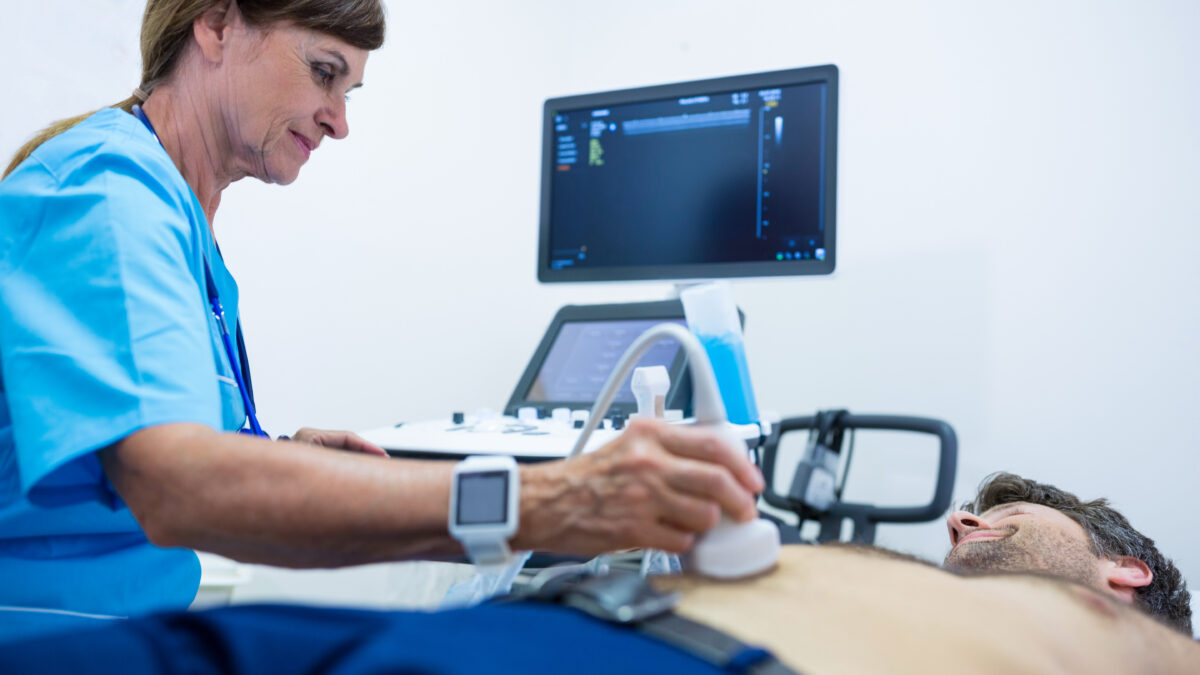- Immediate contact :
- +1-323-988-5889
- info@sonosif.com

Advances in Pelviperineal Rehabilitation: Utilizing Ultrasound Scanners’ Potential
February 23, 2024
Advances in the Diagnosis of Orofacial Pain: Utilizing Ultrasound Scanners for TMJ Evaluation
March 8, 2024Ultrasound technology has long been a cornerstone in medical diagnostics, offering non-invasive insights into the human body’s inner workings. Among its various applications, elastography stands out as a promising technique for assessing tissue elasticity, offering valuable information for diagnosing and monitoring conditions such as liver fibrosis, breast lesions, and musculoskeletal disorders. However, recent advancements have pushed the boundaries further, delving into the intricate realm of muscle physiology, particularly concerning blood levels. Let’s explore how ultrasound scanners are revolutionizing the understanding of muscle health through elastography.
Elastography Unveiled:
Elastography is a relatively modern imaging modality that quantifies tissue stiffness or elasticity by analyzing its response to mechanical stress. Traditional ultrasound provides morphological information, but elastography adds a functional dimension, aiding in the diagnosis and characterization of various pathologies. This technique utilizes ultrasound waves to generate images representing tissue elasticity, helping clinicians differentiate between healthy and diseased tissues.
The Promise of Muscle Elastography:
While elastography has found widespread use in assessing organs like the liver and breast, its application in evaluating skeletal muscles is relatively nascent but rapidly evolving. Skeletal muscles, comprising a significant portion of the human body, play a crucial role in mobility, posture, and overall metabolic health. However, assessing muscle health conventionally has been challenging, often relying on subjective measures or invasive procedures.
Here, the 3in1-CLC4CD emerges as a game-changer, offering a non-invasive means to evaluate muscle elasticity. By quantifying muscle stiffness, clinicians can glean insights into muscle function, integrity, and potential pathologies such as strains, tears, or neuromuscular disorders. Moreover, recent research has unveiled a novel dimension: assessing blood levels within muscles, shedding light on tissue perfusion and metabolic activity.
Probing Muscle Blood Levels:
The concept of evaluating blood levels within muscles using 3in1-CLC4CD elastography stems from the understanding that tissue stiffness is influenced by various factors, including blood flow. Muscles require adequate blood supply to sustain activity, and alterations in perfusion can indicate underlying issues. Ultrasound elastography, coupled with Doppler imaging, enables real-time assessment of both tissue elasticity and blood flow dynamics within muscles.
By analyzing the correlation between tissue stiffness and blood levels, clinicians can gain valuable insights into muscle metabolism, oxygenation, and perfusion. This information is particularly pertinent in sports medicine, where optimizing muscle function and recovery is paramount. Additionally, in conditions such as peripheral artery disease or compartment syndromes, assessing muscle blood levels can aid in diagnosis and treatment planning.
Challenges and Future Directions:
Despite its potential, muscle elastography and blood level assessment face certain challenges, including standardization of techniques, interpretation of results, and accessibility of specialized equipment. Moreover, further research is warranted to establish normative values across different populations and to elucidate the clinical significance of alterations in muscle elasticity and blood flow.
Looking ahead, advancements in ultrasound technology, machine learning algorithms, and miniaturization of devices hold promise for enhancing the utility and accessibility of muscle elastography. Integrating multi-modal imaging approaches and incorporating functional assessments into routine clinical practice could pave the way for personalized medicine and improved patient outcomes in the realm of musculoskeletal health.
Ultrasound elastography has emerged as a powerful tool for assessing tissue elasticity, with expanding applications in the realm of musculoskeletal health. By probing muscle stiffness and blood levels, clinicians can obtain valuable insights into muscle function, integrity, and metabolic activity. While challenges persist, ongoing advancements in technology and research herald a promising future for ultrasound elastography in revolutionizing the assessment and management of muscle-related disorders.




